1 in 6 people worldwide work in the clothing industry
But the working conditions are horrible.
Over 80 billion garments are produced every year
And the impacts on the environment are catastrophic.
The Challenge
In response to the disgraceful state of the clothing industry, Kathmandu delivered us this challenge;
"We now have “growthism” or growth for growth’s sake; the belief that growth is always good. This is killing us. The Benefit Mindset has been offered as a more life-giving way of seeing the world and doing business. How do we empower people to change their lens?"
The Benefit Mindset itself is a radical framework that recognises how we are connected to the world and have a responsibility to improve it.
In the words of Kathmandu itself, it’s about redefining success from best in the world - to best for the world. As a B Corp Kathmandu embodies this by using environmentally sustainable materials and employing ethical labour conditions.
Background Research
If we wanted to empower consumers we needed to understand what the sentiment was towards Kathmandu and sustainability. We sent surveys out to a more general public crowd. Many only had a vague idea of Kathmandu’s sustainability efforts whose initiatives also seemed difficult to find.
This Kathmandu Instagram post below advertises the new Biodown jacket, which innovated the jacket’s ability to biodegrade in landfill. This wasn’t communicated quite clearly, however, since the comments were filled with people pushing back, seeing it as fake and greenwashing.
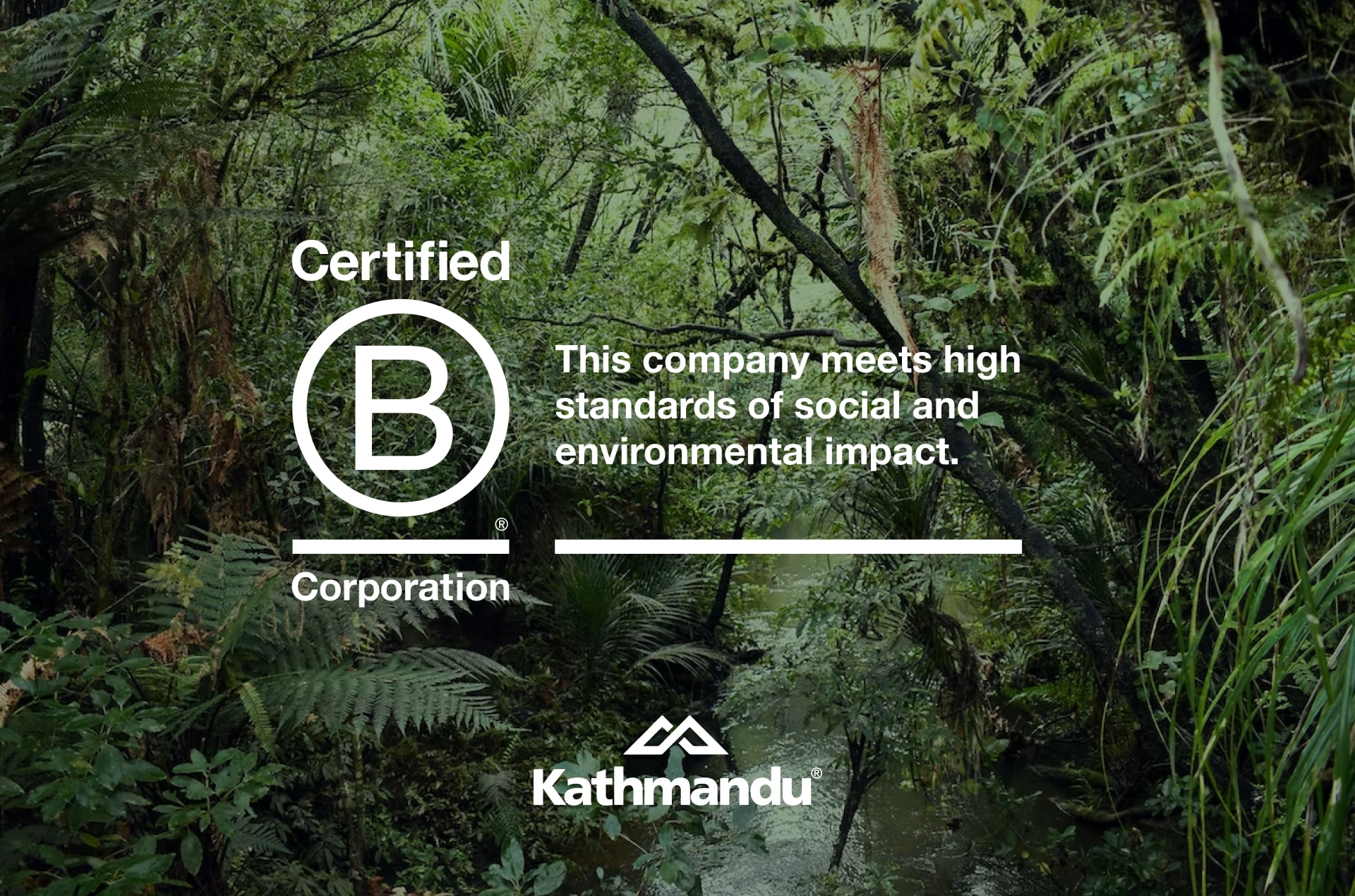
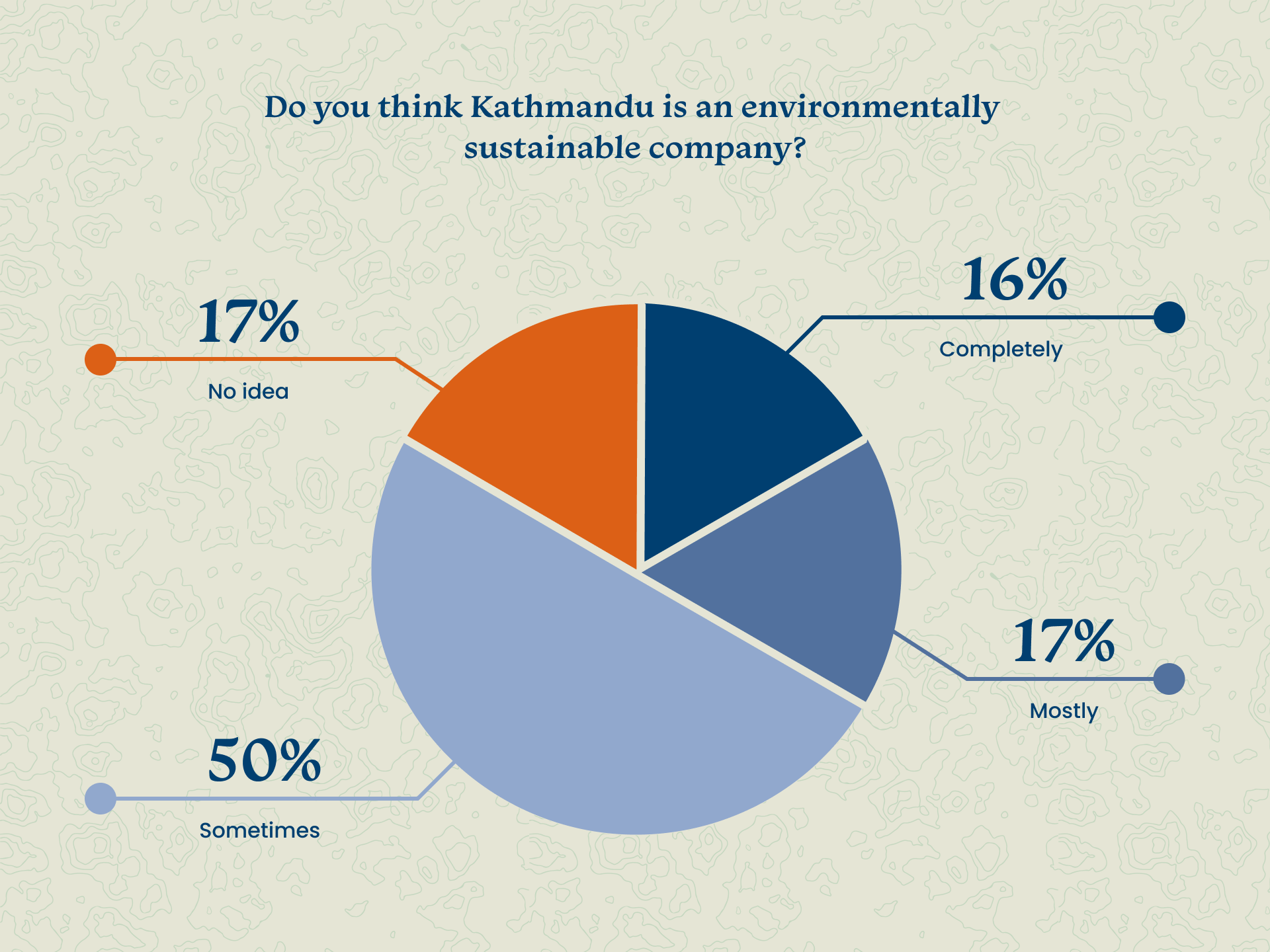
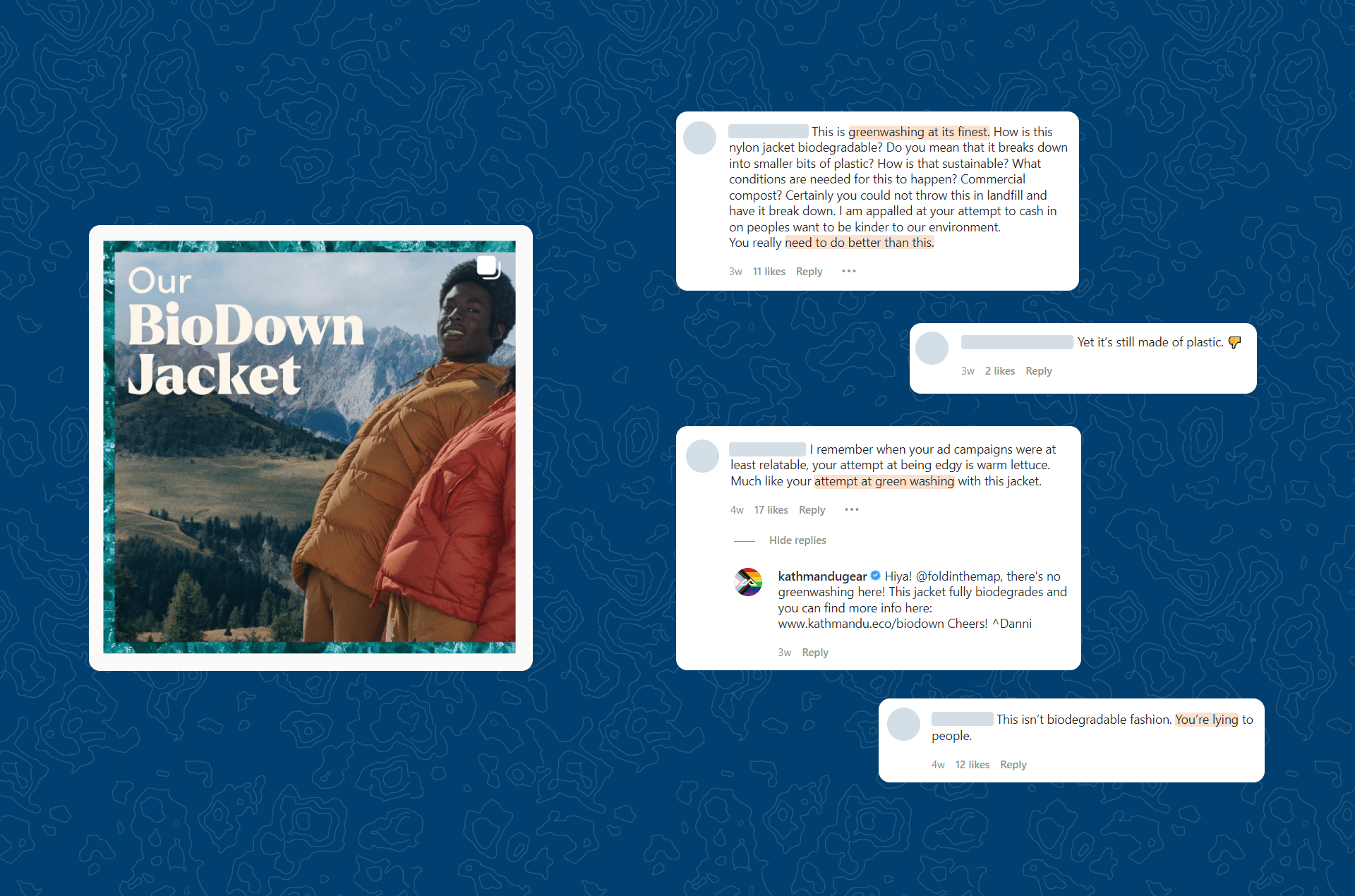
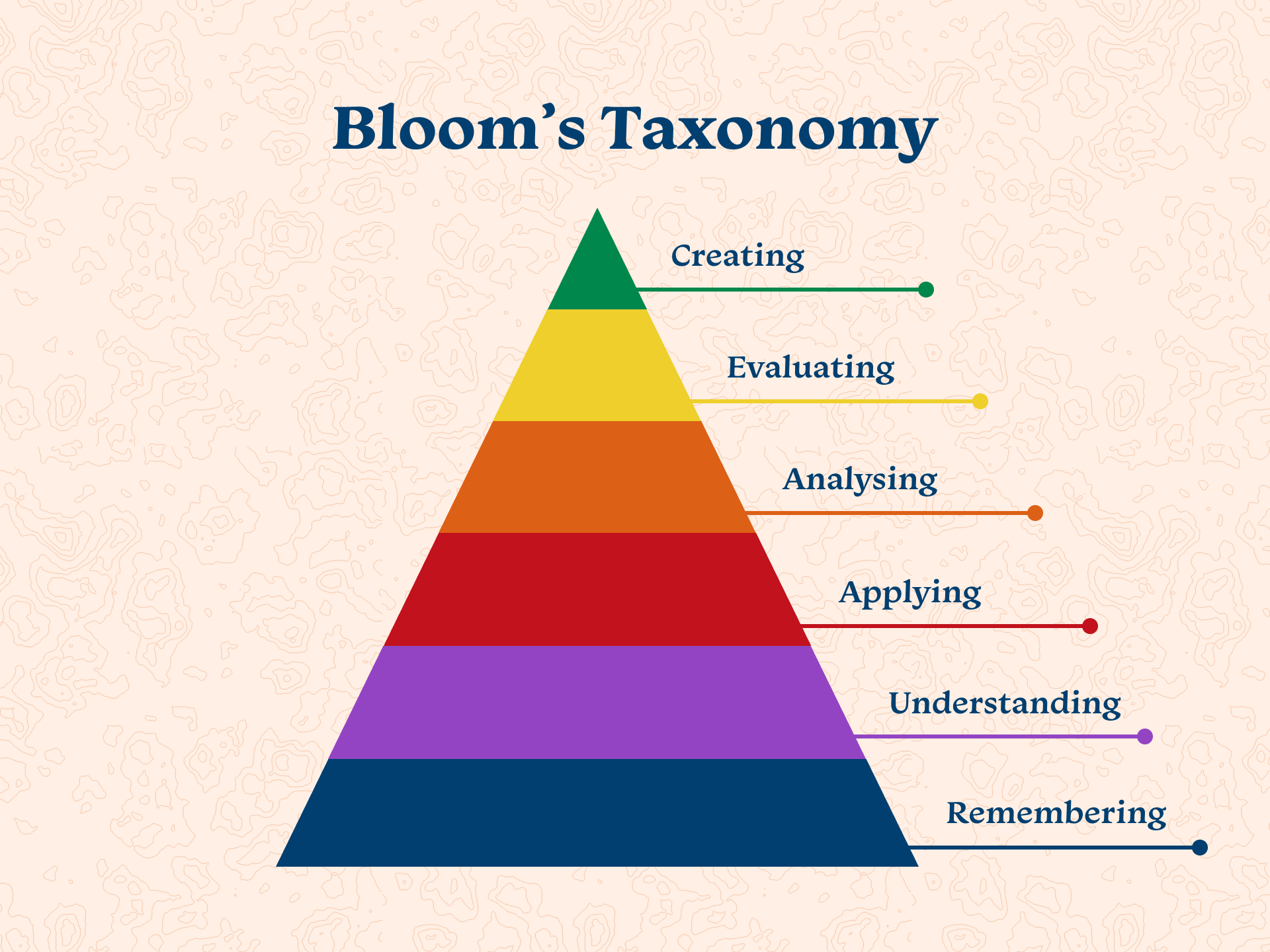
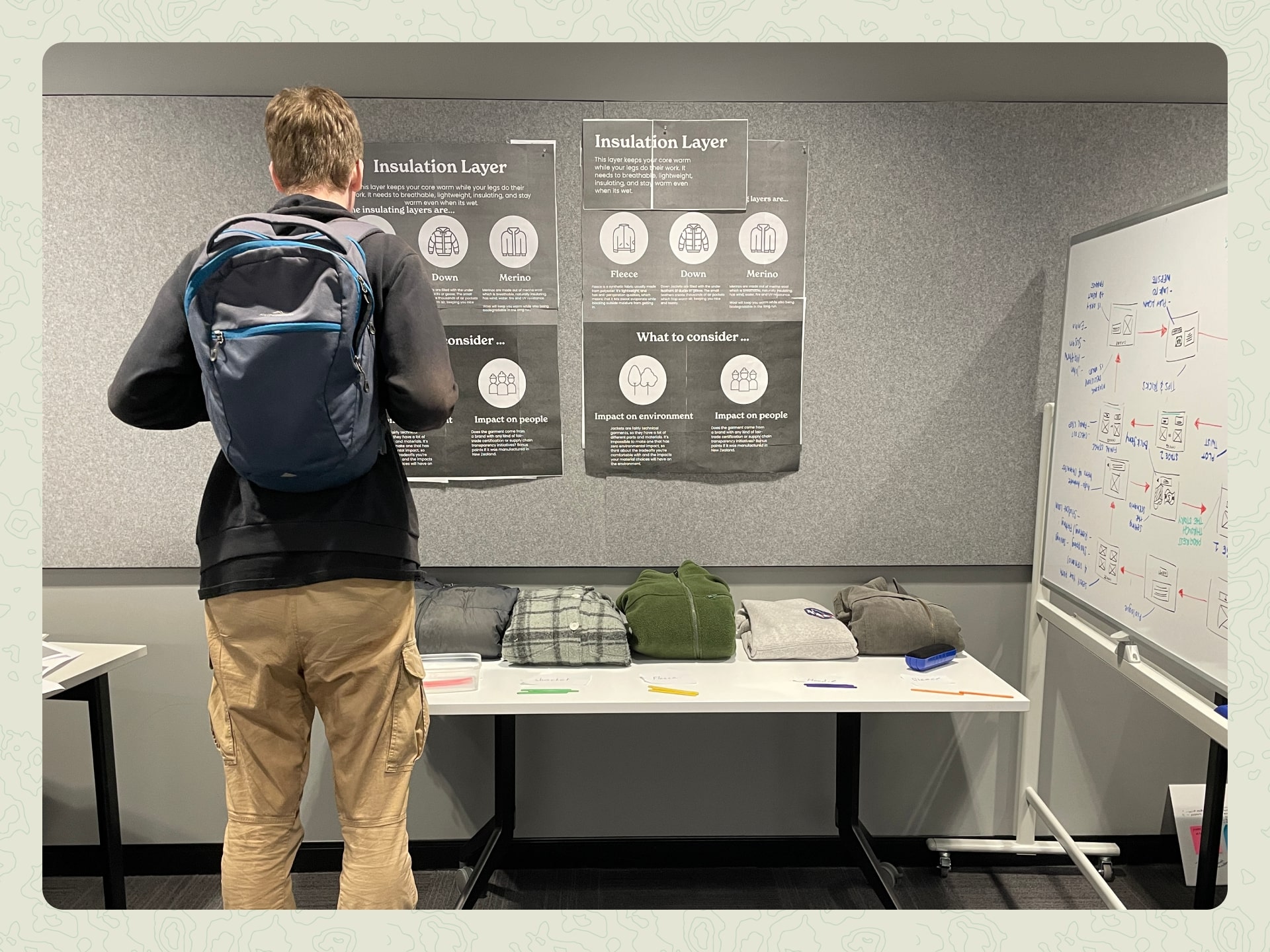

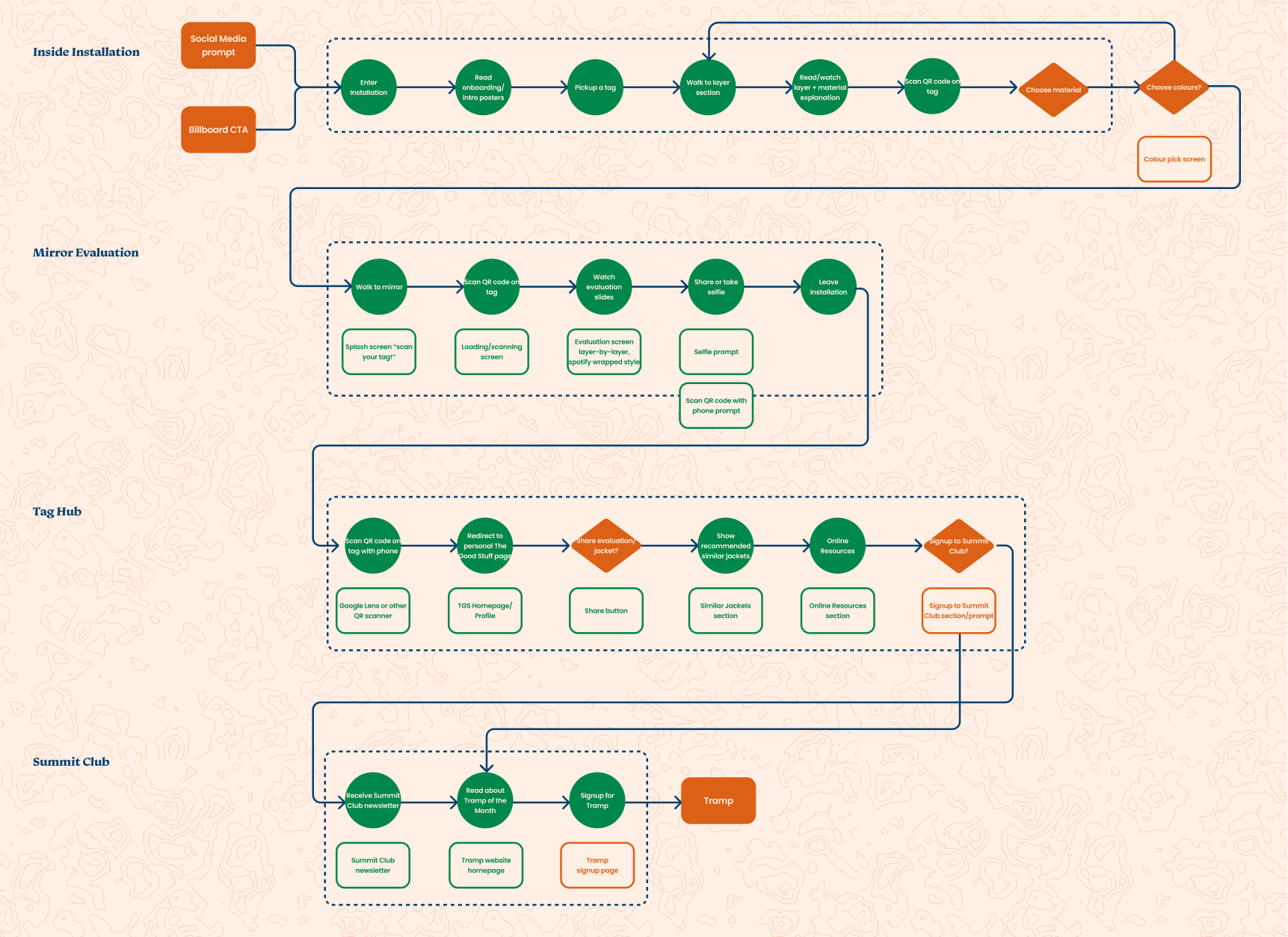
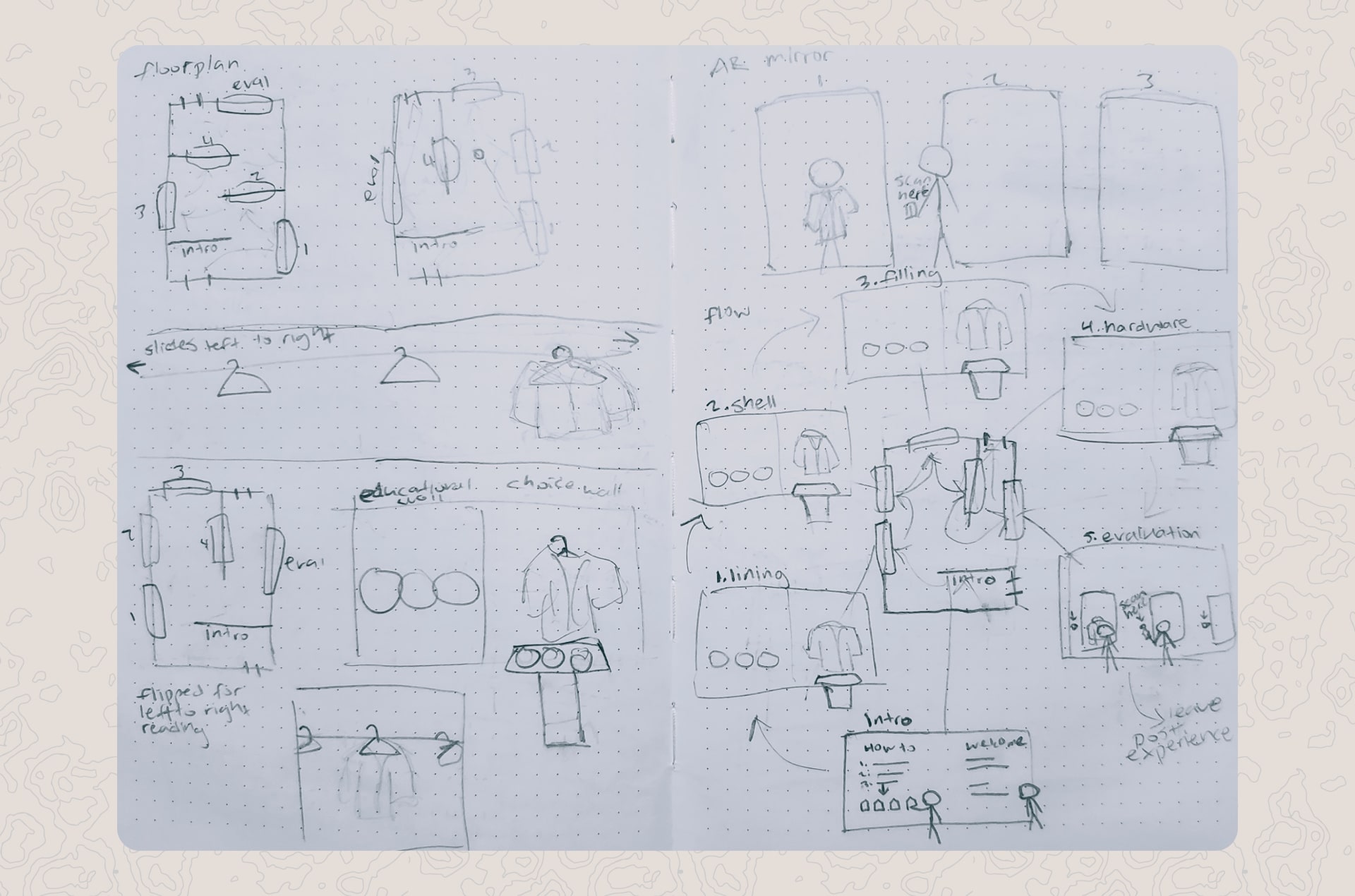


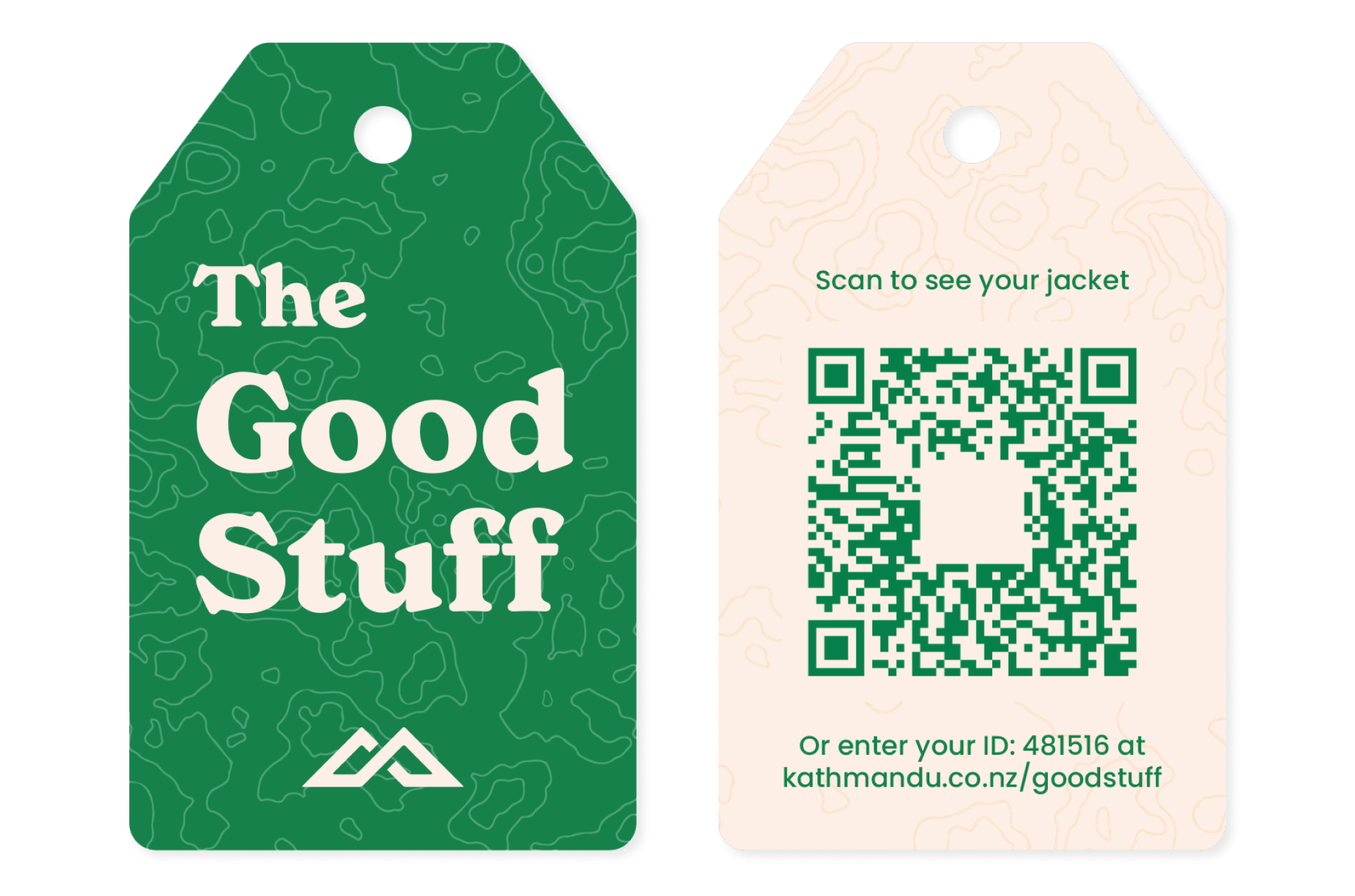
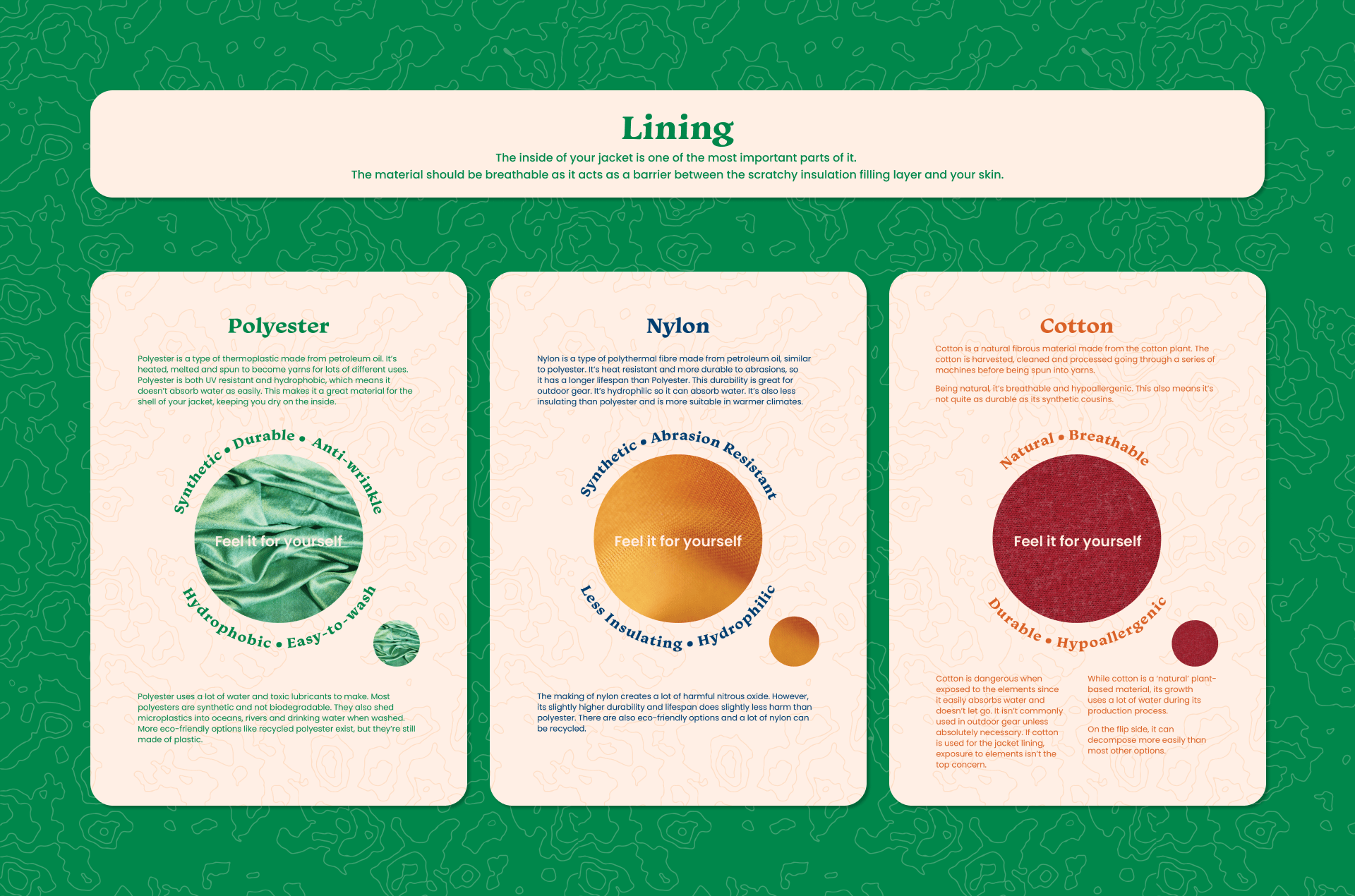
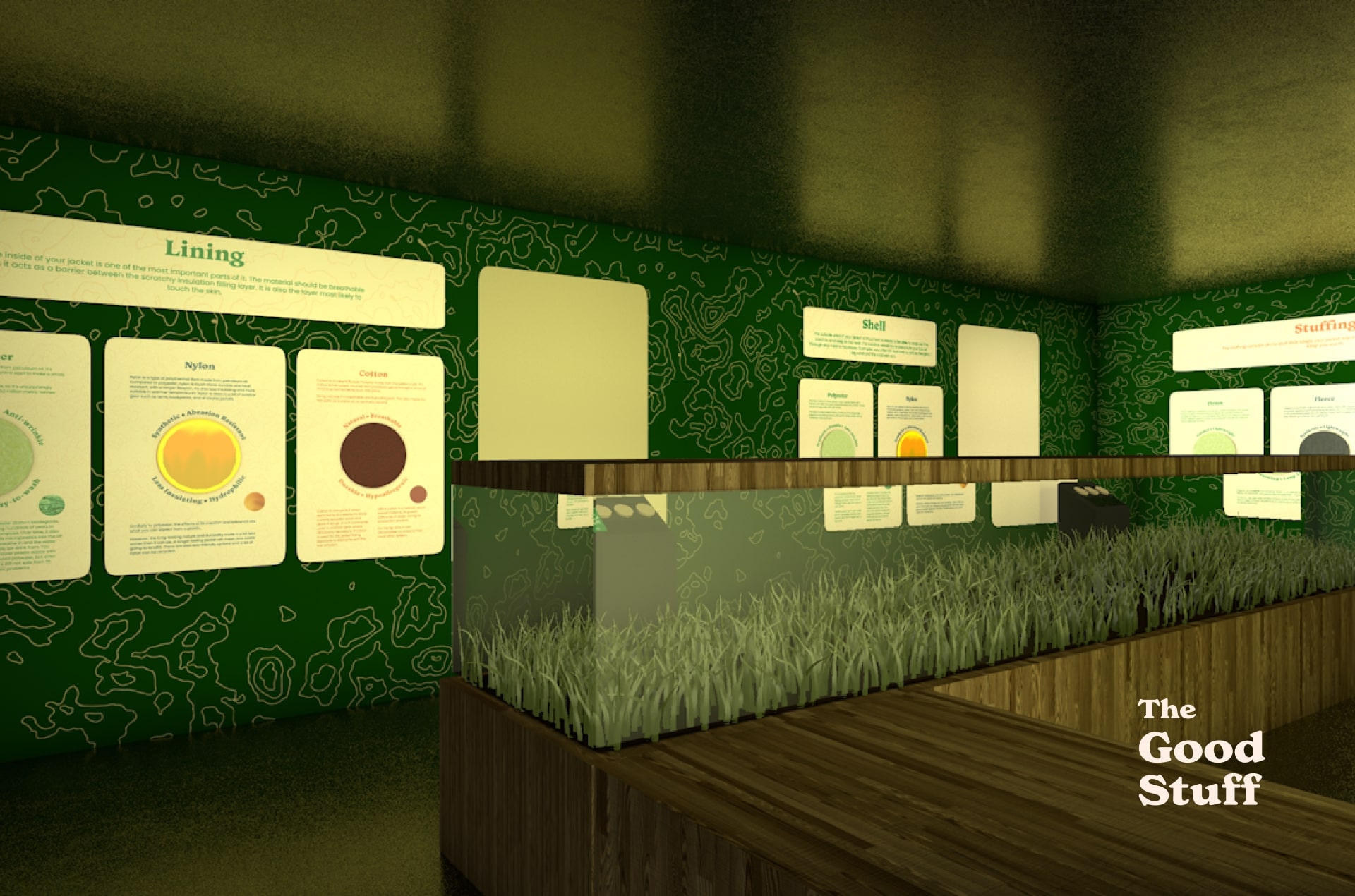
 Design Your Future
Design Your Future